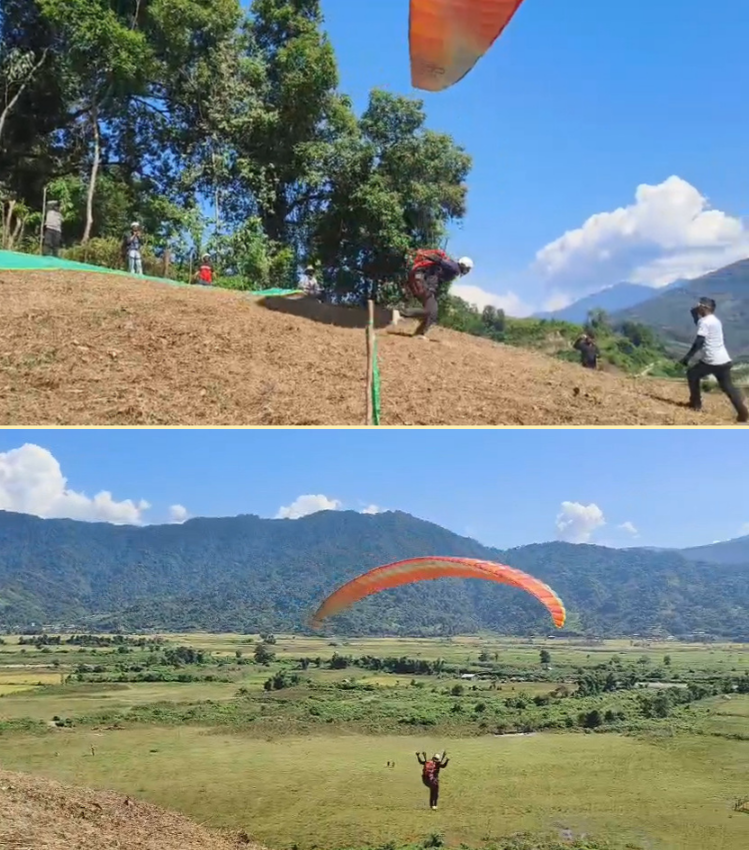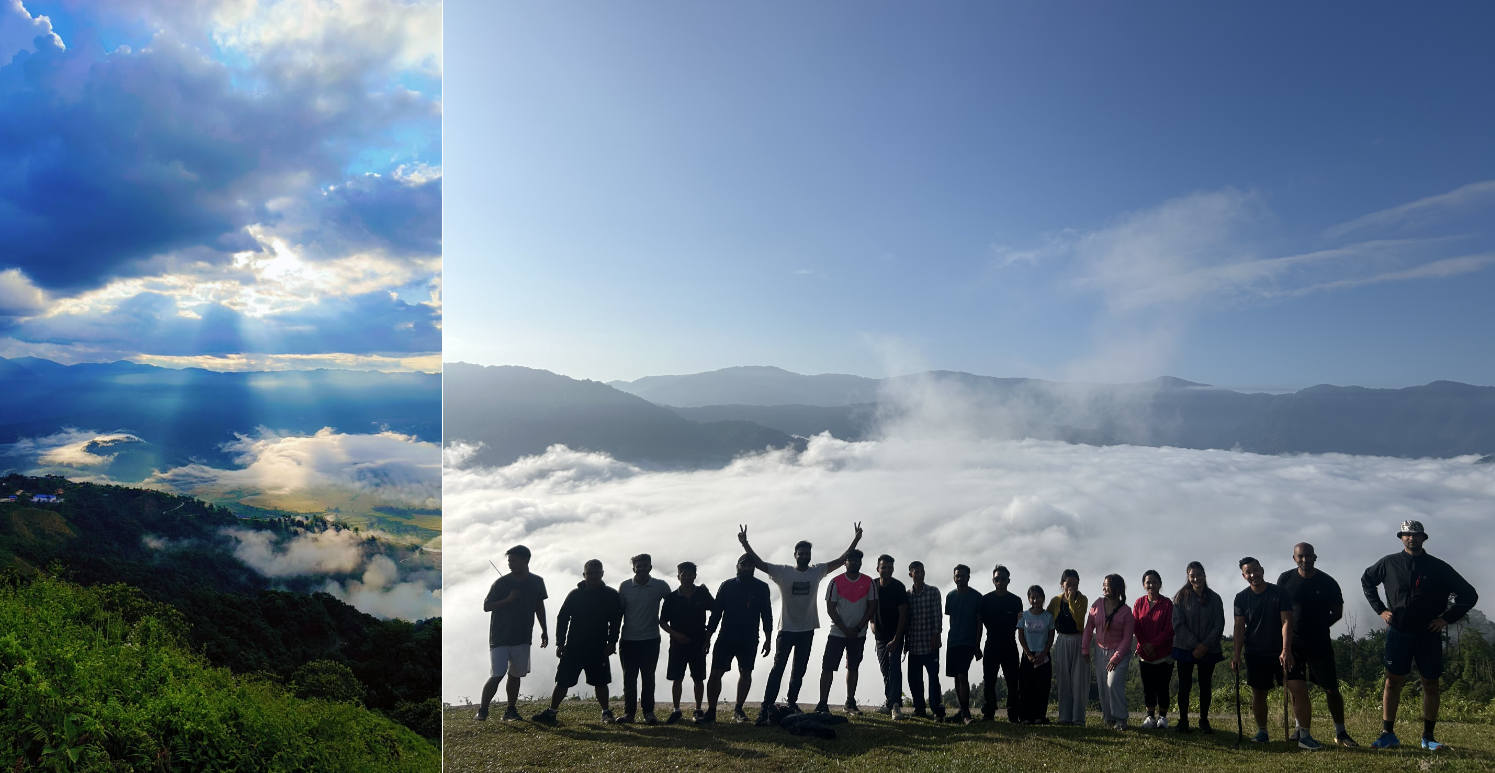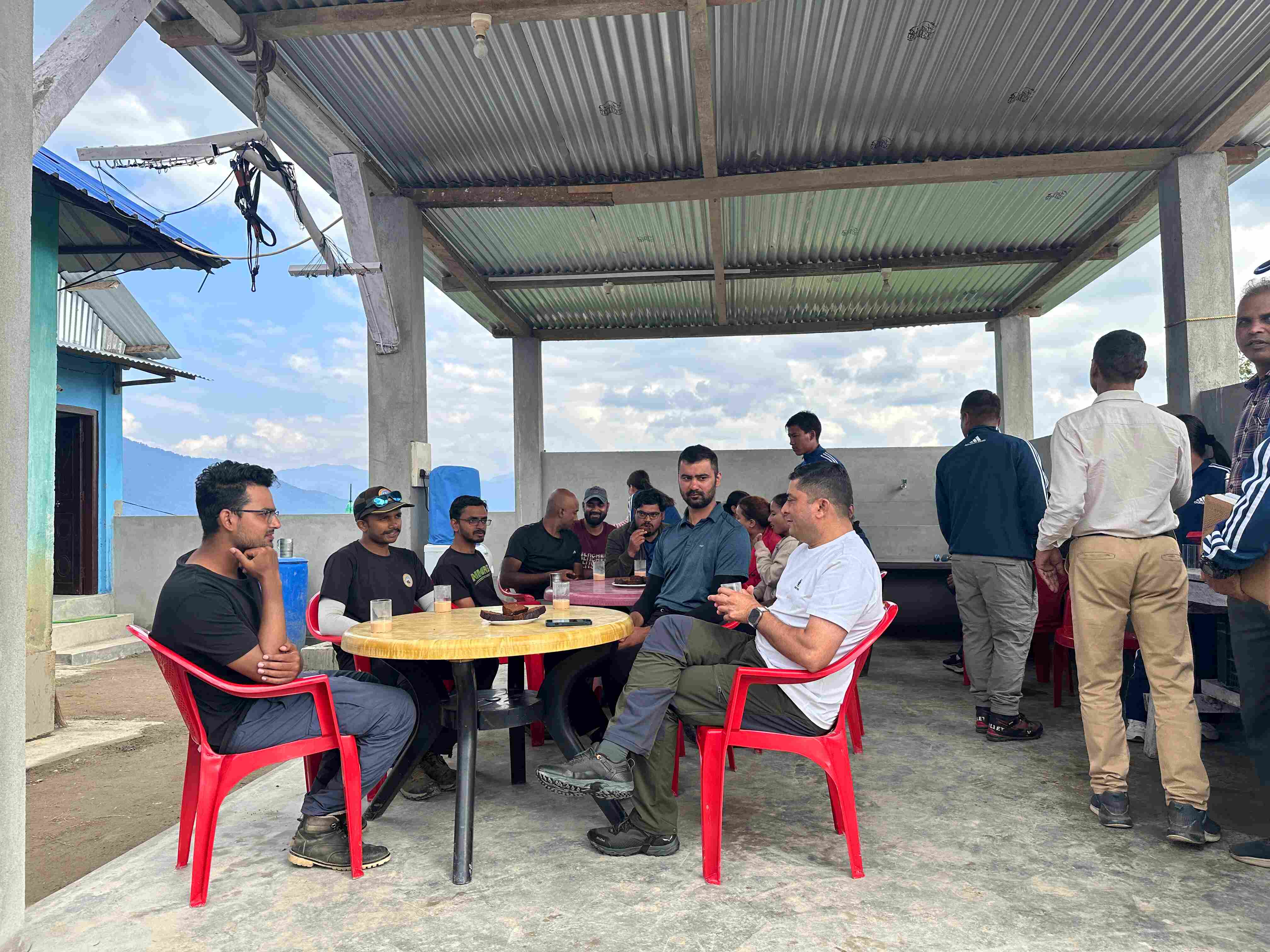Paragliding in Arunanchal Pradesh
Before we start drooling at the prospect of flying with the birds let’s execute step 0

Step 0: Apply sick leave for 18 days. Preferabbly after reaching the training ground.
As a curious cat I am entitled to 9 lives. I nearly lost one on the snow slope training so I still have 8 more to go. A few weeks post my mountaineering course I decided I’d give aerosports a try and boy that took me to cloud 9. I am going to skip the details where we clean grass and pick up cow dung at the landing zone.
NIMAS. National Institute of Mountaineering and Adventure Sports conducted its 10th Combined Paragliding Course in mid October. There are three phases to this:
P1: Ground Handling. Where you learn to judge where your glider canopy wants to take you and how you dictate the path and not the other way round.
This is the hard part. I promise things are smooth sailing after this. You can’t take off or land if you can’t run with your glider. Only 1 in 6 accidents happen in air in paragliding so its best to be armed for the remaining 5. Our goal is to lift the canopy from the ground in headwind, ensure that it doesn’t get ahead of us by damping (slight break) and sprinting ahead. Its always fun to mushroom your glider when you head back
 If you've studied physics in class 9 it won't be much trouble figuring out how a glider works. A canopy has open cells which gets filled with air when you kite it in the wind. this creates the necessary pull that gets you airborne. Naturally when the canopy tilts left you get pulled to the left. Our job is to immediately correct the trajectory by shifting to left as we try applying right brake gently to try and get the glider horizontal again.
If you've studied physics in class 9 it won't be much trouble figuring out how a glider works. A canopy has open cells which gets filled with air when you kite it in the wind. this creates the necessary pull that gets you airborne. Naturally when the canopy tilts left you get pulled to the left. Our job is to immediately correct the trajectory by shifting to left as we try applying right brake gently to try and get the glider horizontal again.
P2: Bunny Hops. Where you learn to get over the fear of jumping off a cliff.
Gear up and learn to pack a glider cuz mushrooms are for noobs now. We need to pack mylar to mylar neatly and head for a quater hour long trek back to take off site. We are getting ahead of ourselves. Let’s go back to the launch site for now.
A P2 pilot is expected to judge when the headwind is right for him to raise his canopy and NOT rest on the seat harness. As inticing as it maybe we need to remember that the a bunny hop flight barely lasts half a minute and you should be in a position to land your two feet. Or risk a spine injury. Its worse than dying.
There is a lot that happens before and after a flight. When you’re not flying you’re helping other pilots gear up. Clearing any knots on their riser. Being a cameraman. Staying alert at the stop line to stop a failed take off. God forbid if you’ve managed to screw the takeoff in the first few seconds its better to abort it alltogether than to find yourself hung on some random tree. Yes we’re expected to still communicate on our radio set “Pilot Yash safely landed” in that event as well. As long as we don’t need a stretcher you can assume we’re safe for the most part.
We have progressed very quickly from mammals to birds. As a matter of fact birds are who we should be looking out for if we want to catch thermals and ascend upwards instead of just flying to land. A windsock at the landing area helps us judge the direction of wind which is cruical for safe landing. As the glider approaches the ground we have the ability to control the speed using control lines. Yes the same “brake” lines with which we were controling direction on ground in P1. You’re allowed to take upto half the brake while approaching the ground and when we judge landing to be around 4 feet beneath us, we go for full flare. Go ahead and put your entire weight on it if you will. Hopefully we get a feather landing and a few seconds to sprint towards our landing marshall who had been with us the entire time on radio. Good job sir. I can walk after flying still. Unbelievable.
P3: Flying with the birds
 This is where your social media profiles get the most likes. Or dating apps if you're me. I don't use social media. Want my Bumble link tho?
This is where your social media profiles get the most likes. Or dating apps if you're me. I don't use social media. Want my Bumble link tho?
Anyways, we digress. It has all been fun and games so far and we’ve all been waiting for an opportunity to make the skin tan worth it. Pro tip: carry bandana to deal with sweaty forehead if you wear specks. You don’t want your vision compromised mid air. Before judging by the picture I’d like to reassure you - my loyal subscriber - we fly with reserve parachute and its on the lower right end of the seat harness. In case there is an emergency and we have sufficient altitude we will drop without a broken limb. The usual risks of this event entails landing on live electric wires but we can ignore that for the course. Have faith in physics and your gliders will respond to your inputs the way you intend for it to.
Take a deep breath in. We’re going to be a pilot now. Should we consider ridge soaring over Everest? Afterall those climbers can only get to 8,848.86m above sea level. The take off marshal has cross checked our gear and we’re ready to take a leap of faith. We’re done with all pre-flight checks and reported our status over radio. What can possibly stop this awakening of the beast from within?
The wind direction. Anti-climatic, right? We wait there for 20 minutes for the wind to change direction. It doesn’t care. Indian fighter jets are conducting their routine patrol thousands of feet above us ensuring our territorial integrity like the true guardian of the skies that they are. We should totally consider paramotoring next and not depend on wind as much.
And then finally we get a headwind. Palms are sweaty, knees weak, arms are heavy. Everyone jolts into action. Cameraman has you on his lens to project any possible mistake in the class later to have a good laugh. Few guys lift your canopy a little. The locals are just as enthusiastic about us raising the wings to take off. They sometimes come near us and pose with the pilot-to-be. Such nice people.
We pull the glider like we did in P1. We sprint ahead and shift weight like we did in P2. P3 demands that we stay calm and enjoy the fruits of our labour. We let go off the controls to adjust ourselves in the seat harness for a few seconds. Felt terrifying at first. That’s alright. Fear is an instinct; courage is a response. We hear the people cheering behind us. Their voices fade away and the take off marshal’s composed judgement about the wind takes over. He instructs us to head towards a nearby water reservoir. Thoughts about crashing in the lake and drowning with the glider run like a slideshow as we fly closer. We reassure ourselves with our skill in unbuckling the seat harness in the event of a water-splash-crash. Becoming fish feed would be a cool cause on death certificate none the less.
We take a deep sign of relief as we clear our way away from the lake. The worst has been averted. Now all that’s left is to approach the landing zone like we did in P2. We shift our hip outwards as taught in the preceeding class and are ready to approach the land. Windsock suggests we are in headwind. We check the speed with 20% of brakes engaged and right before 4 feet we perform a full flare. The glider nearly haults to a zero as we decide to take the baby for a run and happily run towards the landing marshall. Although he is only a few feet away from where we mushroom to clear the area for next pilot, we still are obliged to report our status. “Pilot Yash safely landed.”
 While learning to fly by ourselves was a worthy cause, the friends that we made along the way was what made the course an adventure. Right from the people people who taught us to fly, the brothers who helped us pack our glider and sometimes came to our rescue when we tripped or just steered the wrong way in a moment of fear: everyone leaves their mark and helps you grow as a person. We came here as individuals and we go back relying on other people's idea of transportation and stays. This was a journey in the _Indian Himalayas_.
While learning to fly by ourselves was a worthy cause, the friends that we made along the way was what made the course an adventure. Right from the people people who taught us to fly, the brothers who helped us pack our glider and sometimes came to our rescue when we tripped or just steered the wrong way in a moment of fear: everyone leaves their mark and helps you grow as a person. We came here as individuals and we go back relying on other people's idea of transportation and stays. This was a journey in the _Indian Himalayas_.
See you soon reader. Until next time. May the Gods watch over you.